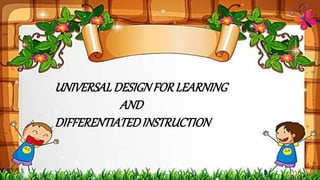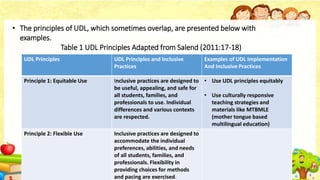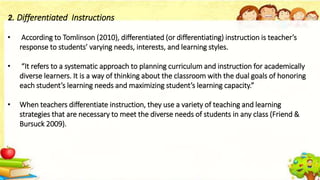Universal Design for Learning (UDL) and Differentiated Instruction are two evidence-based inclusive classroom practices. UDL involves presenting information and materials in multiple ways to ensure all students can access and understand content. It has three elements: multiple means of representation, action/expression, and engagement. Differentiated Instruction is adapting instruction to meet diverse student needs through content, process, product, and learning environment. It involves varying difficulty, support, grouping, choice, and evaluations. Both aim to accommodate all students and maximize learning.















